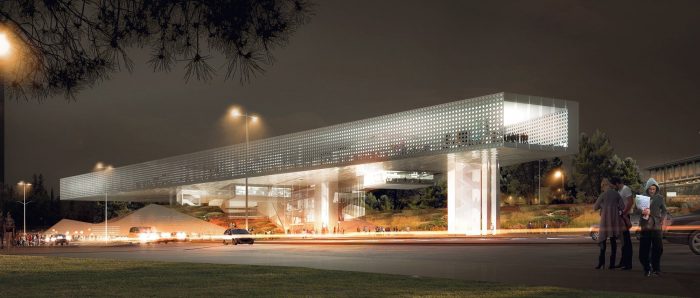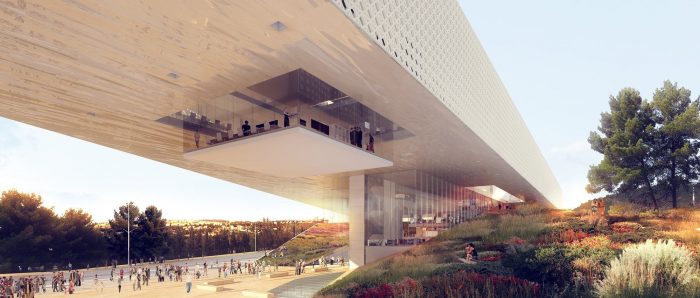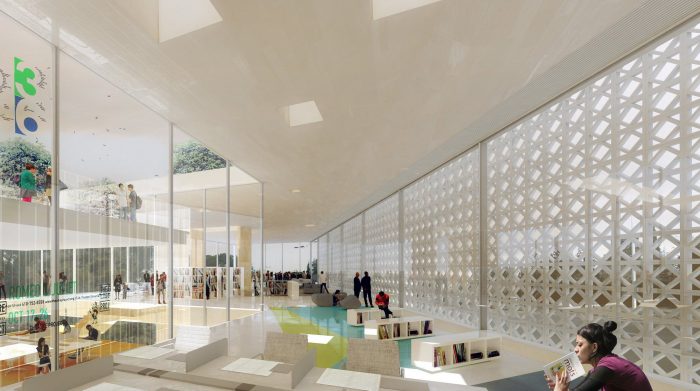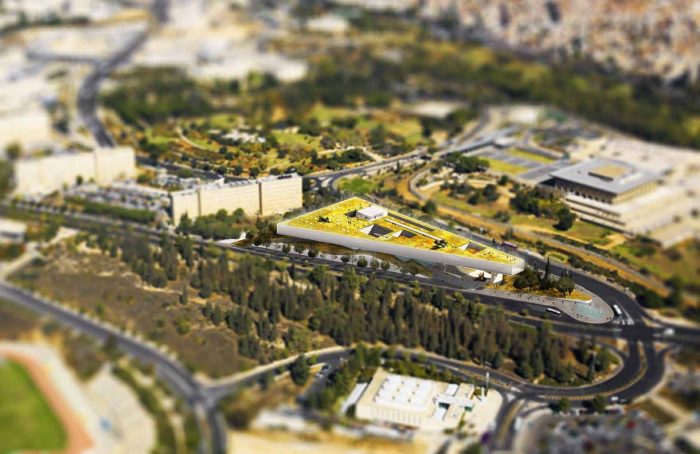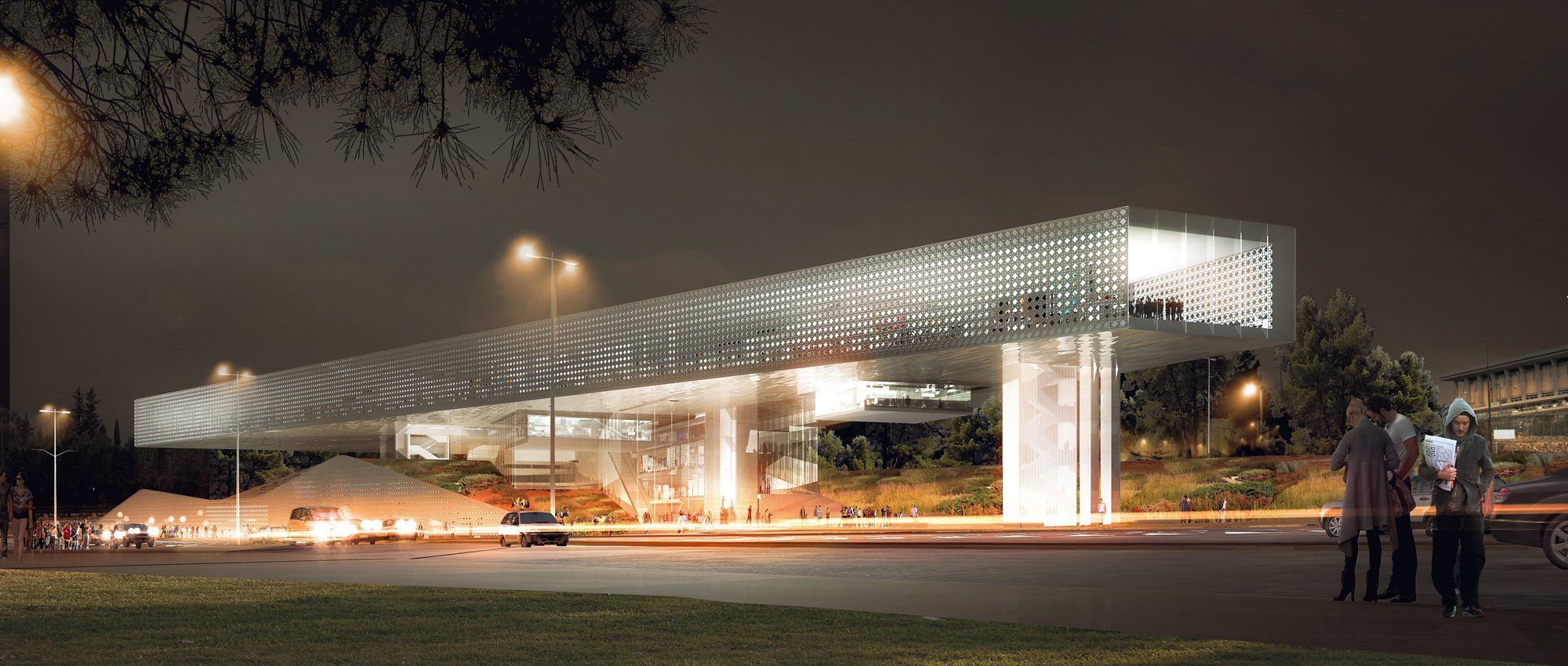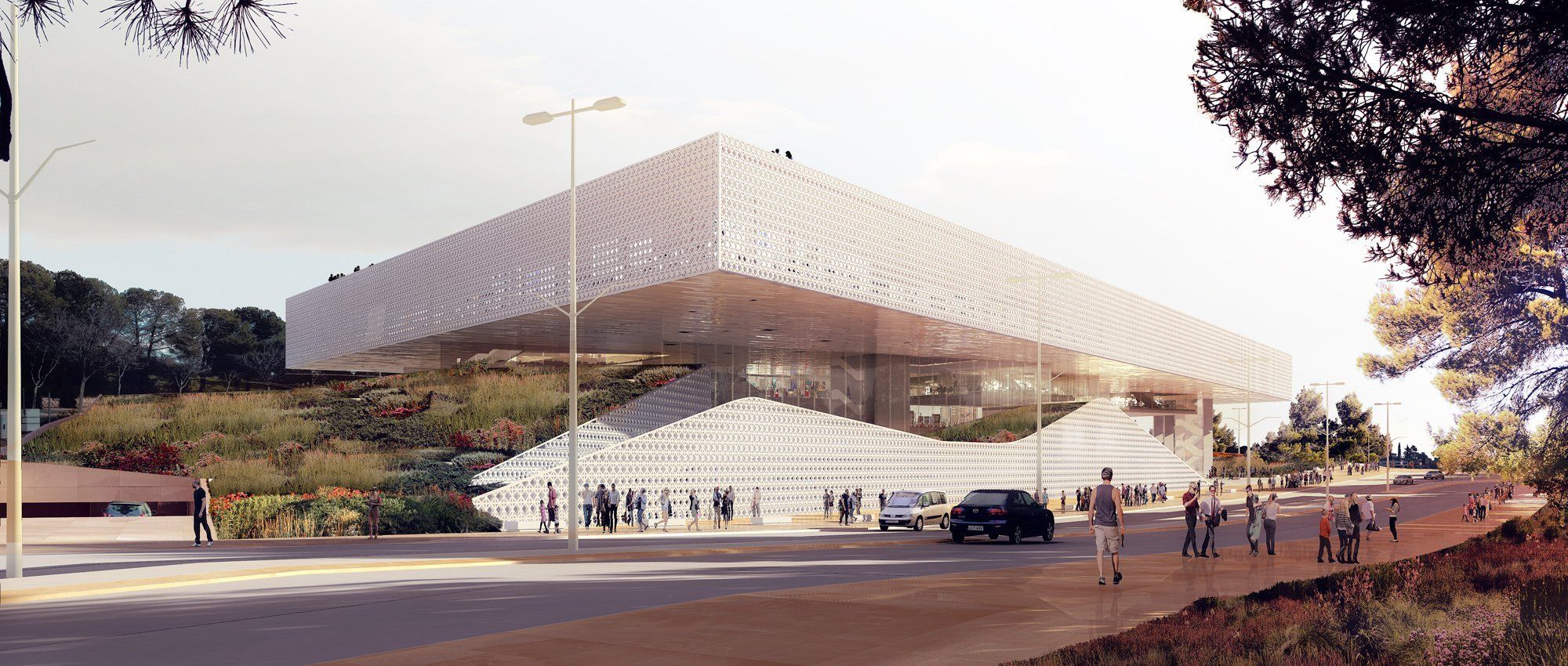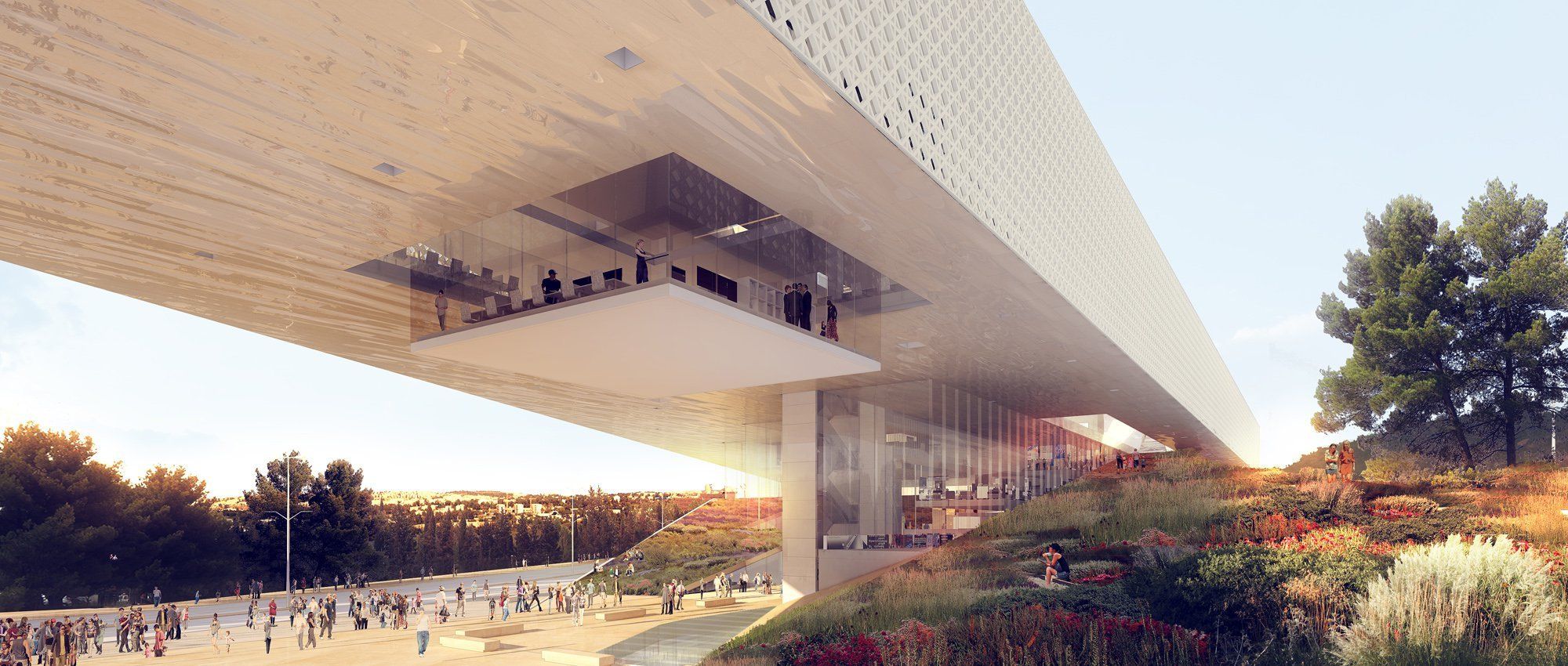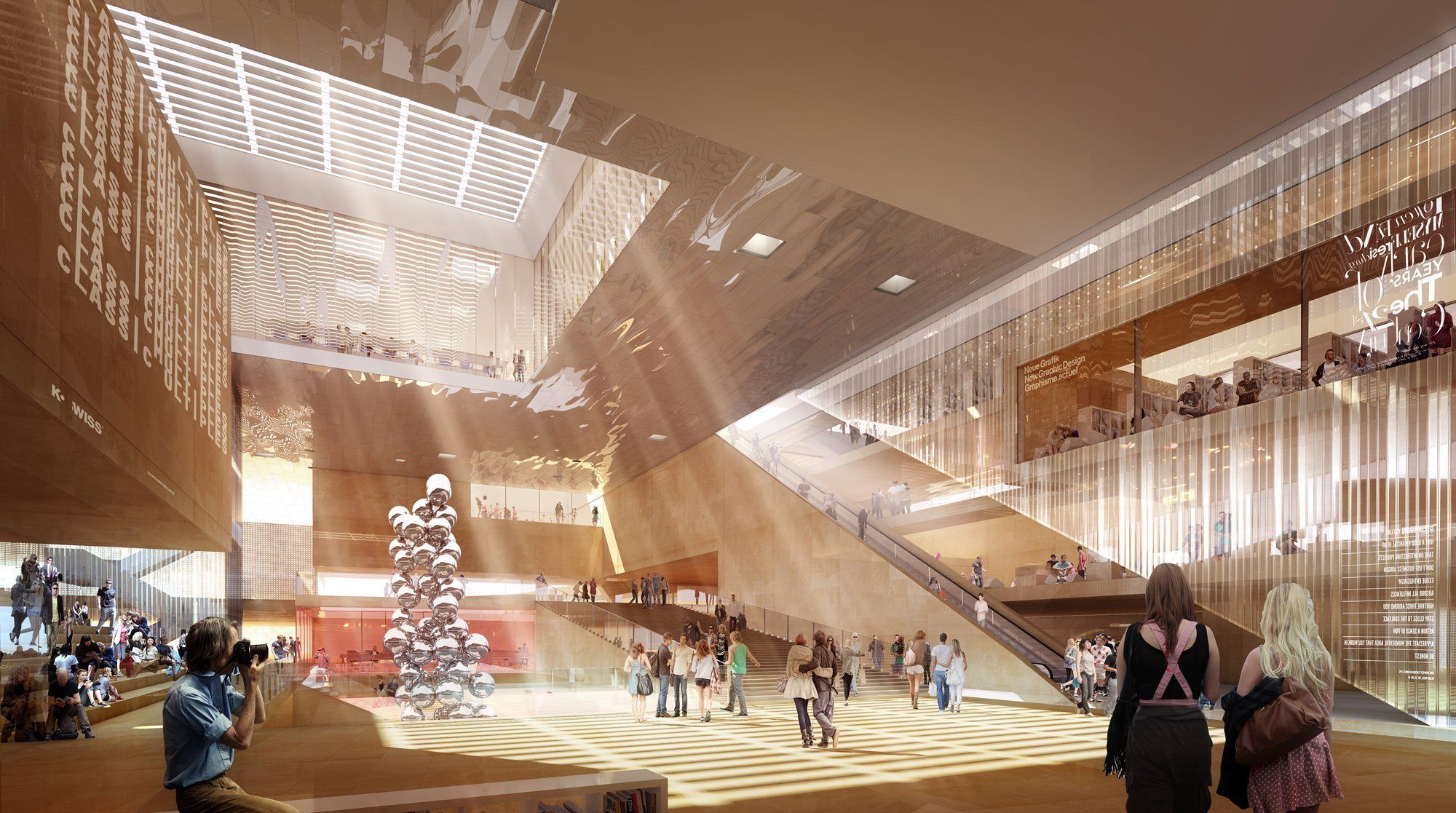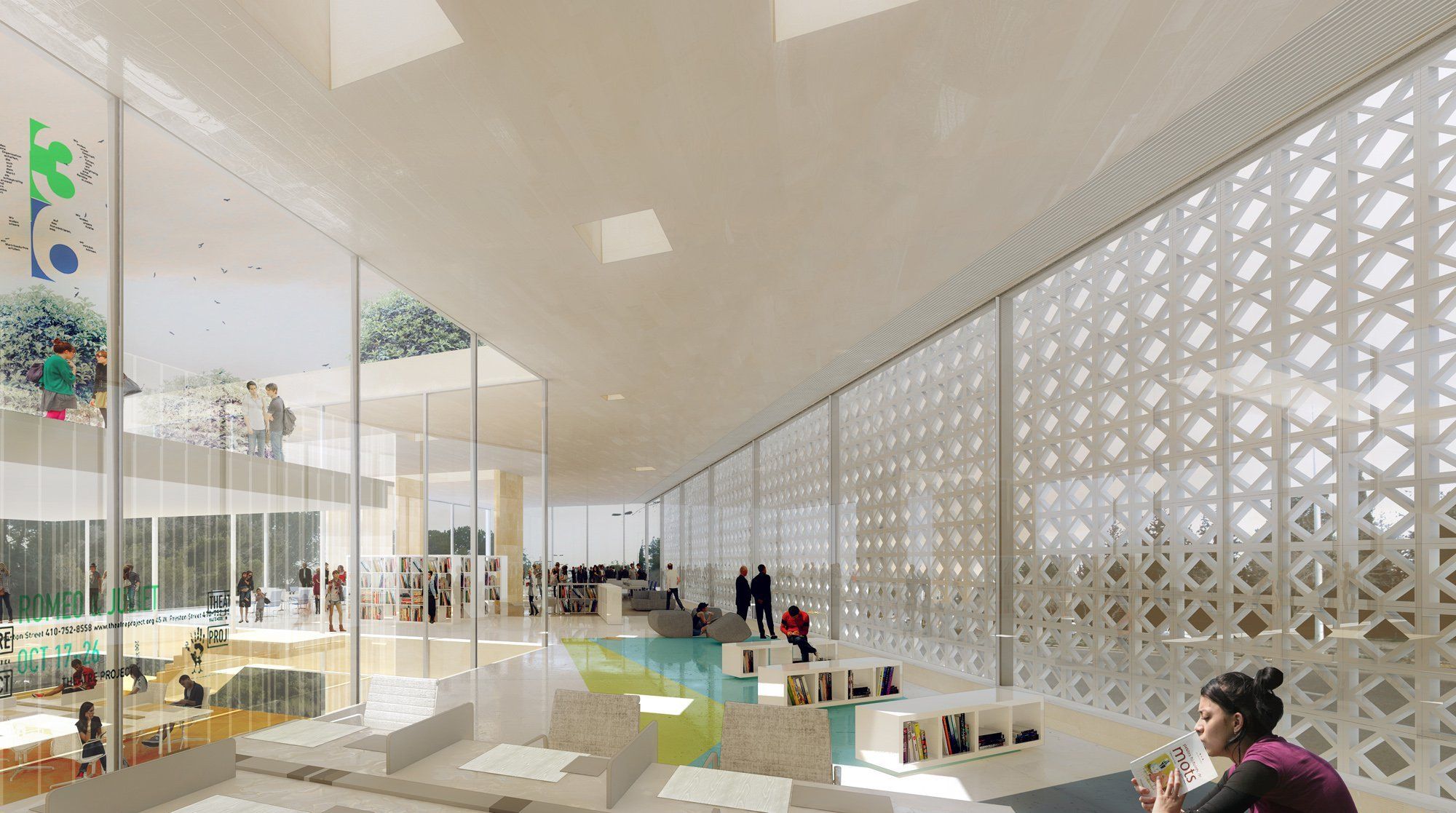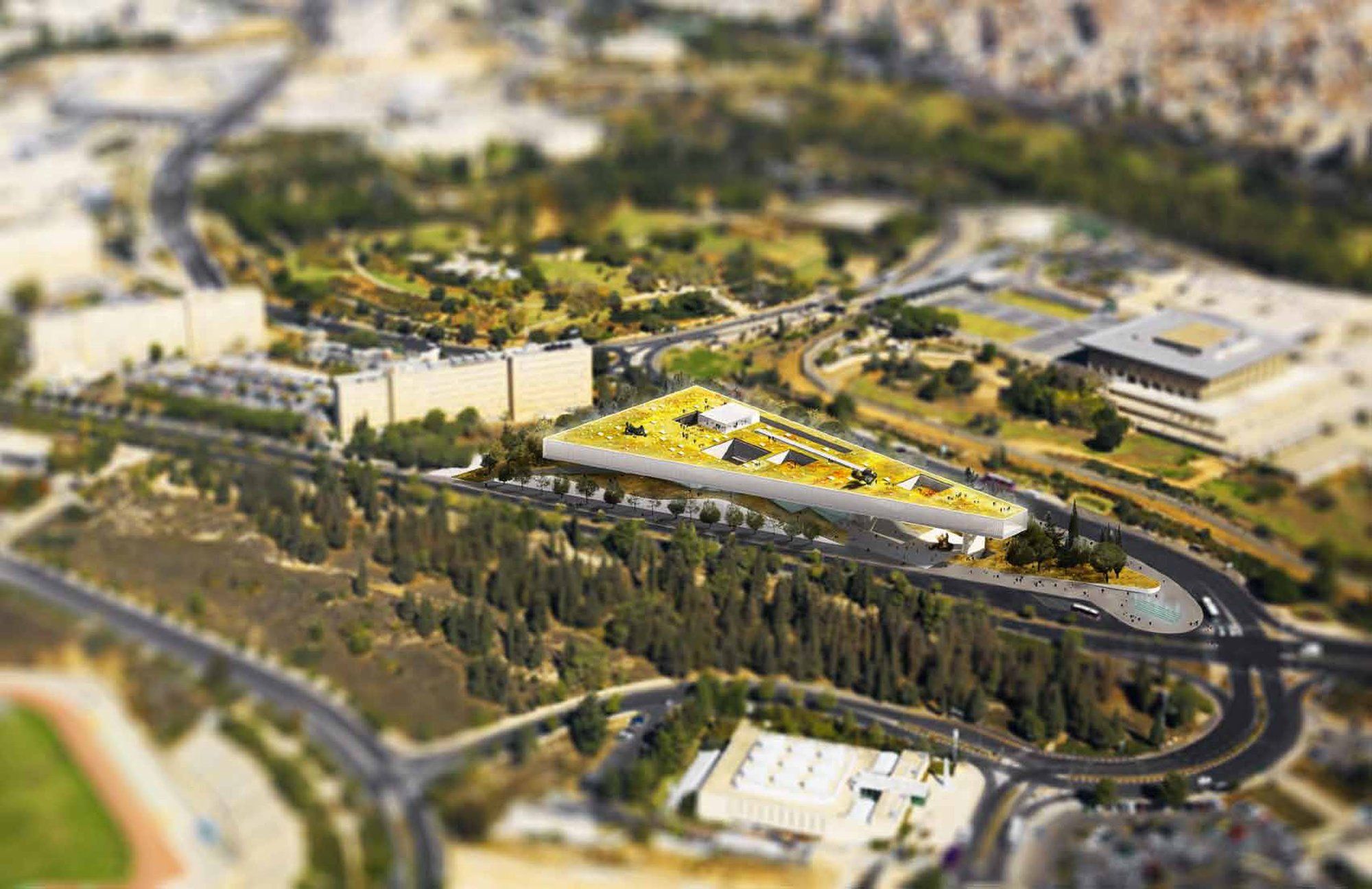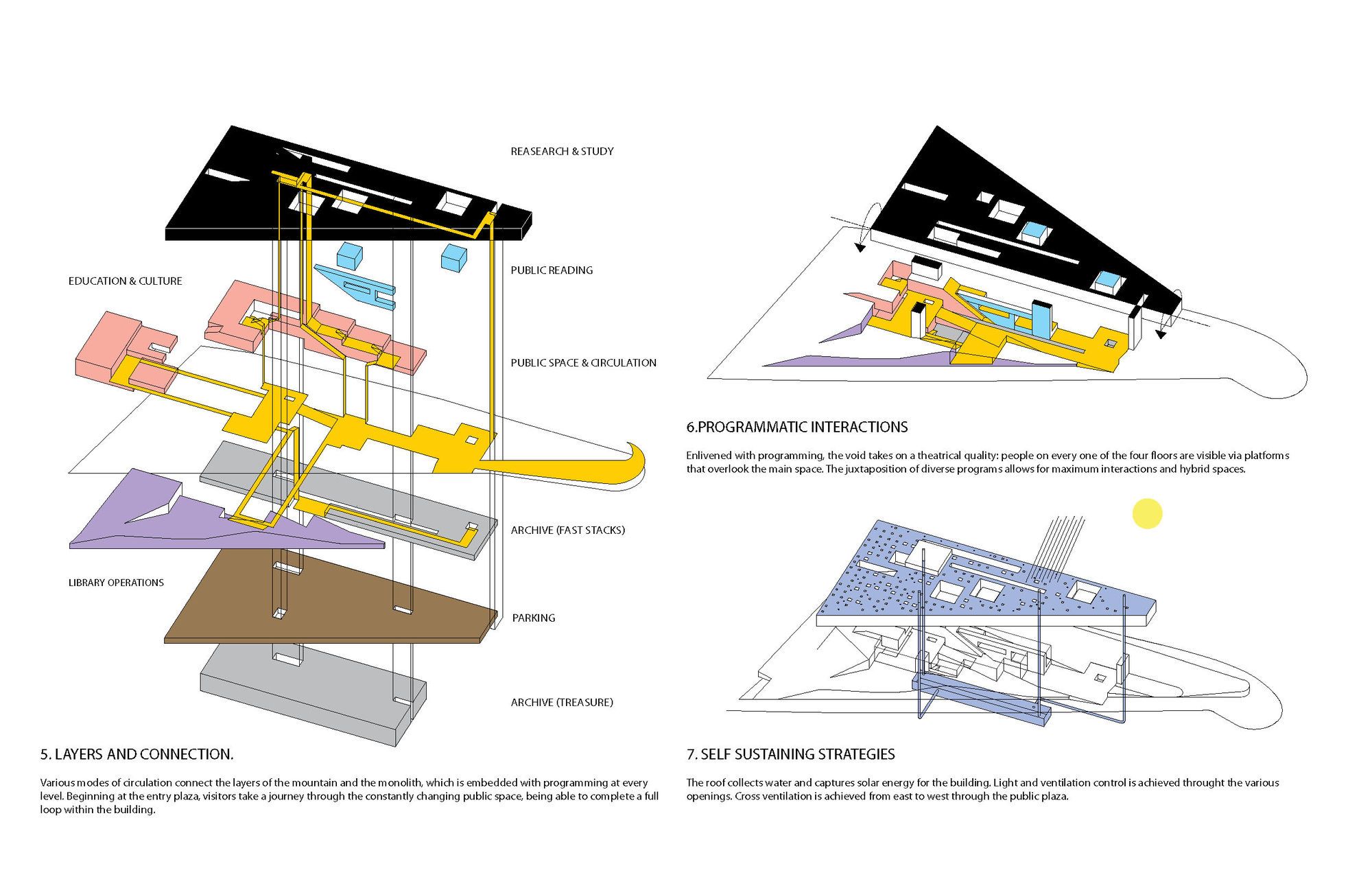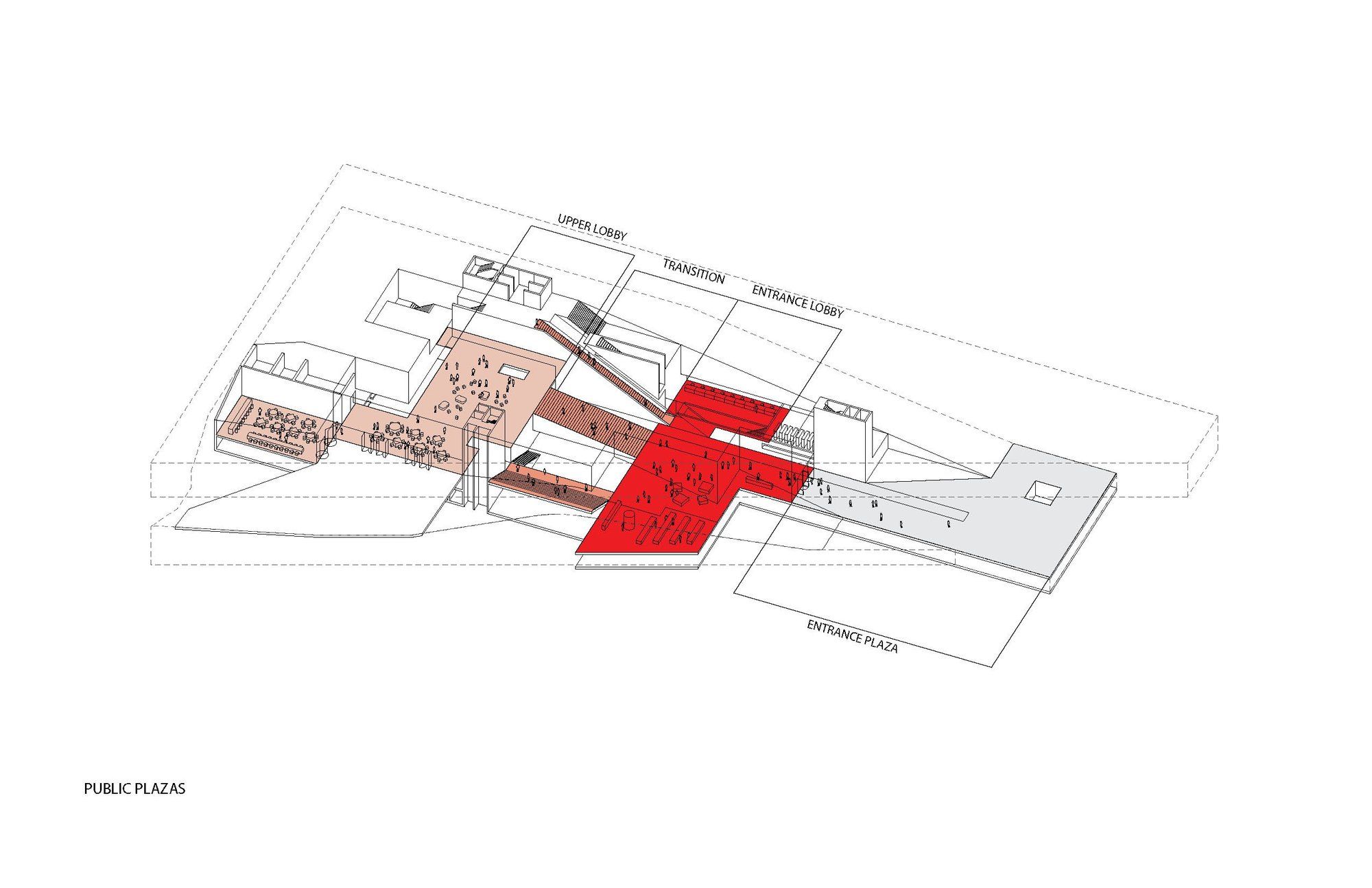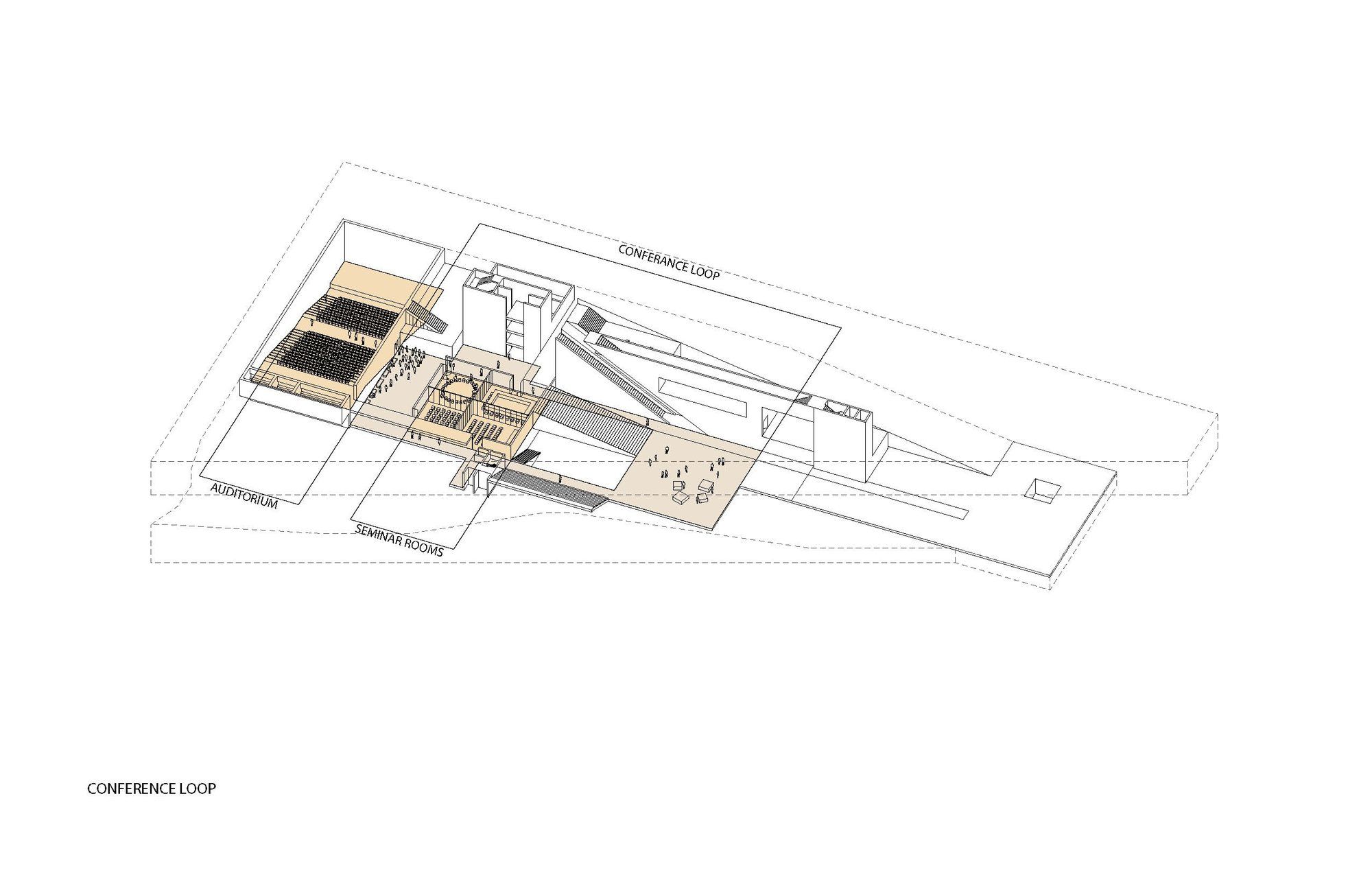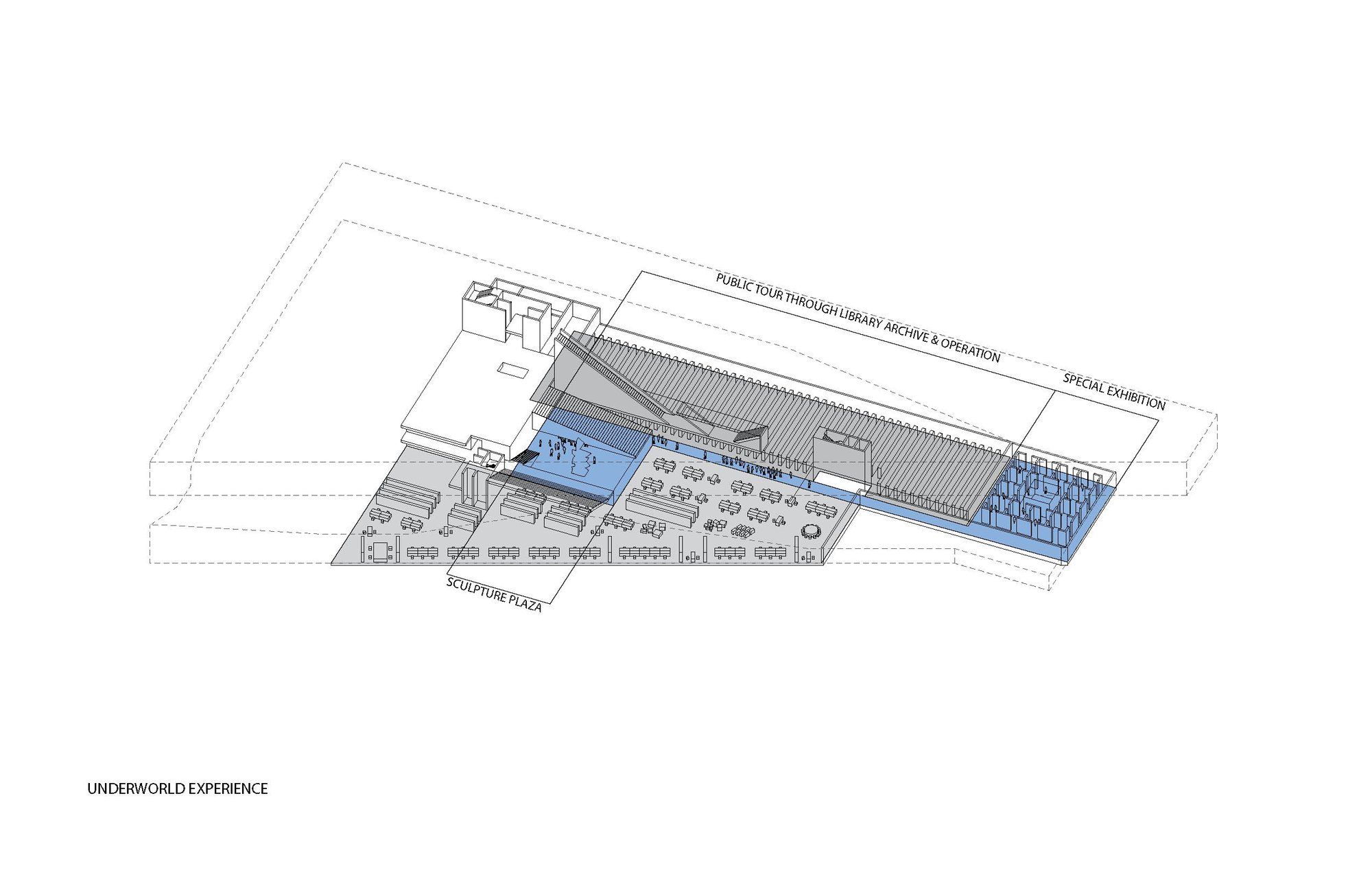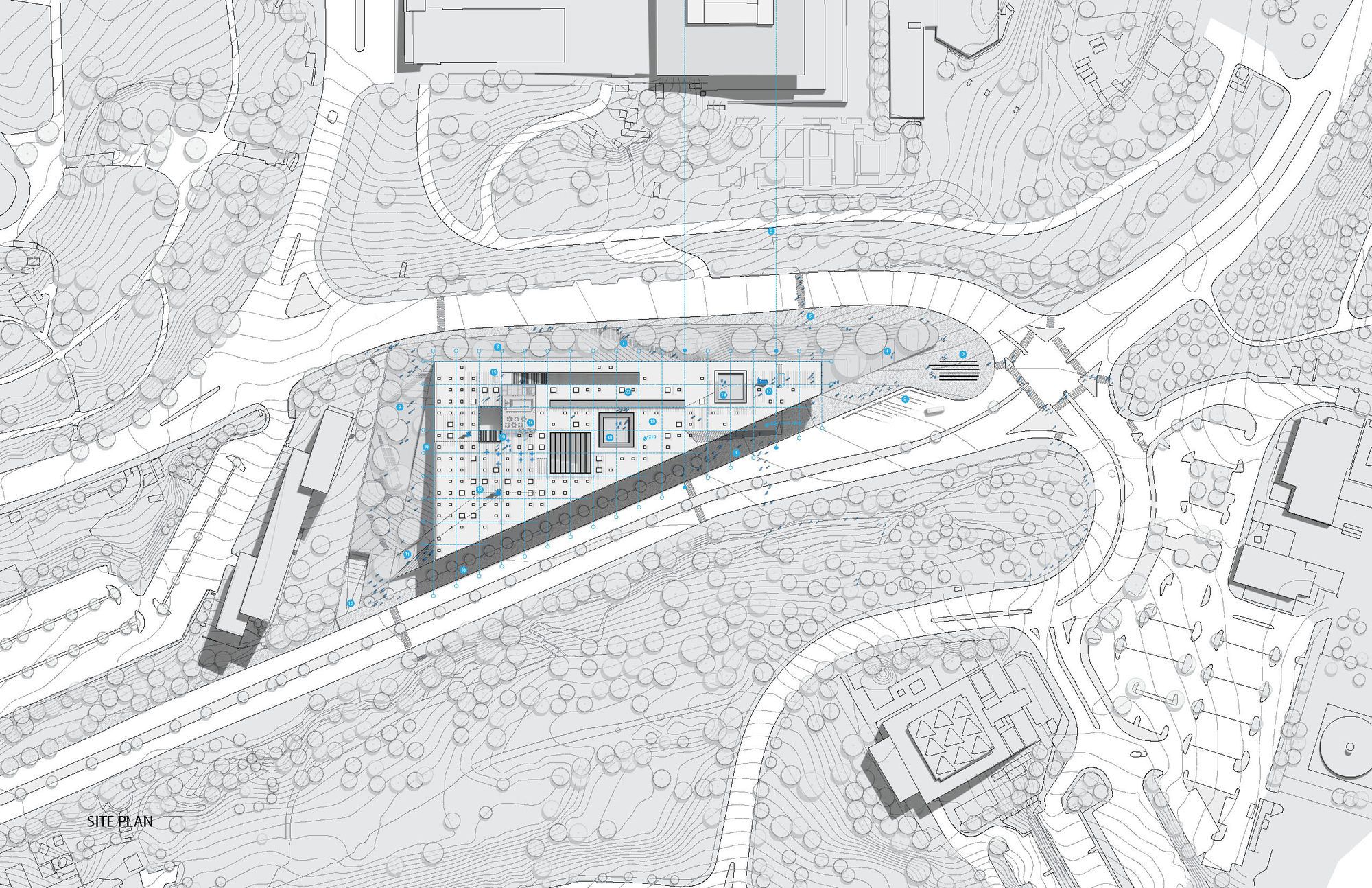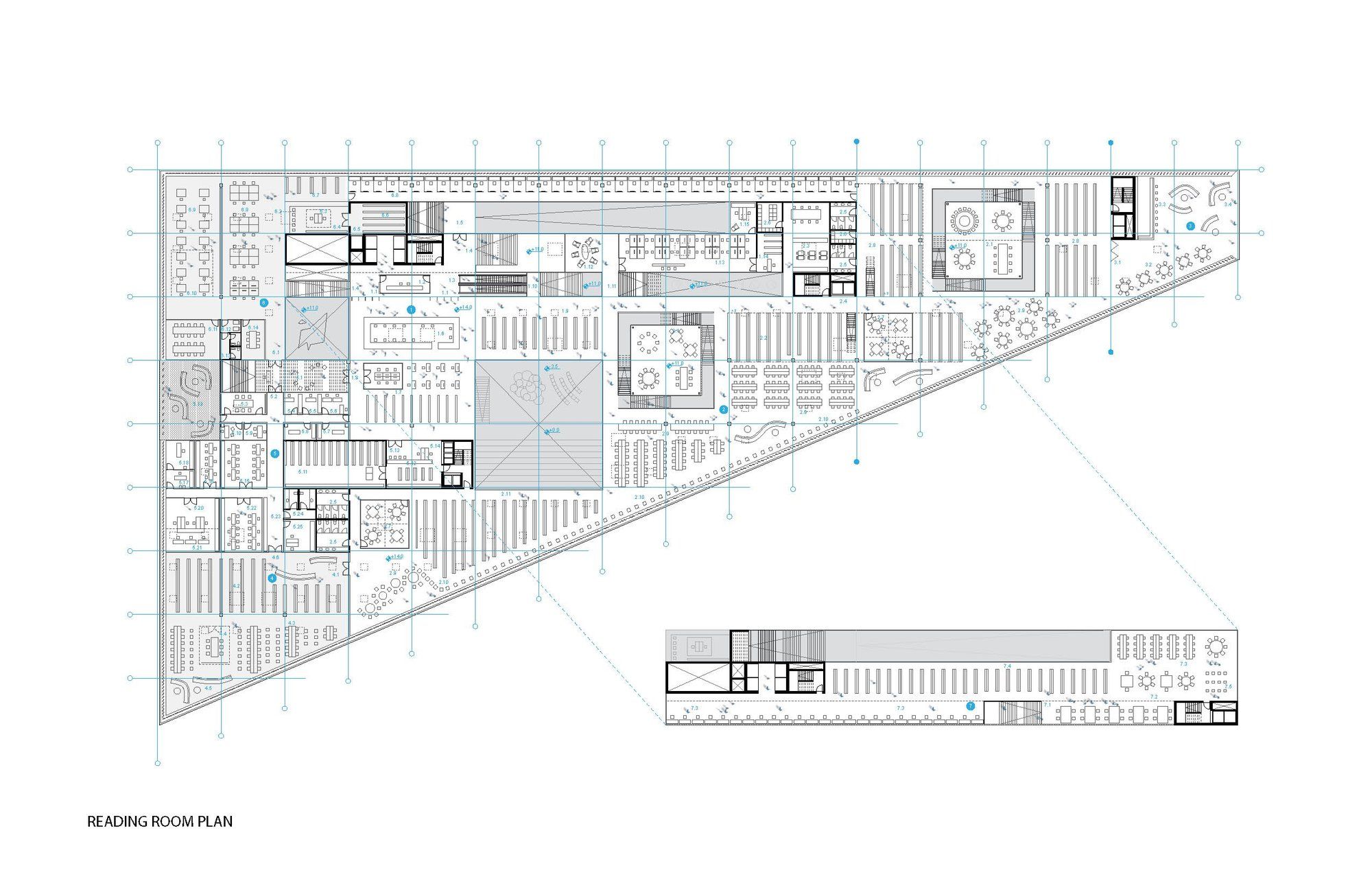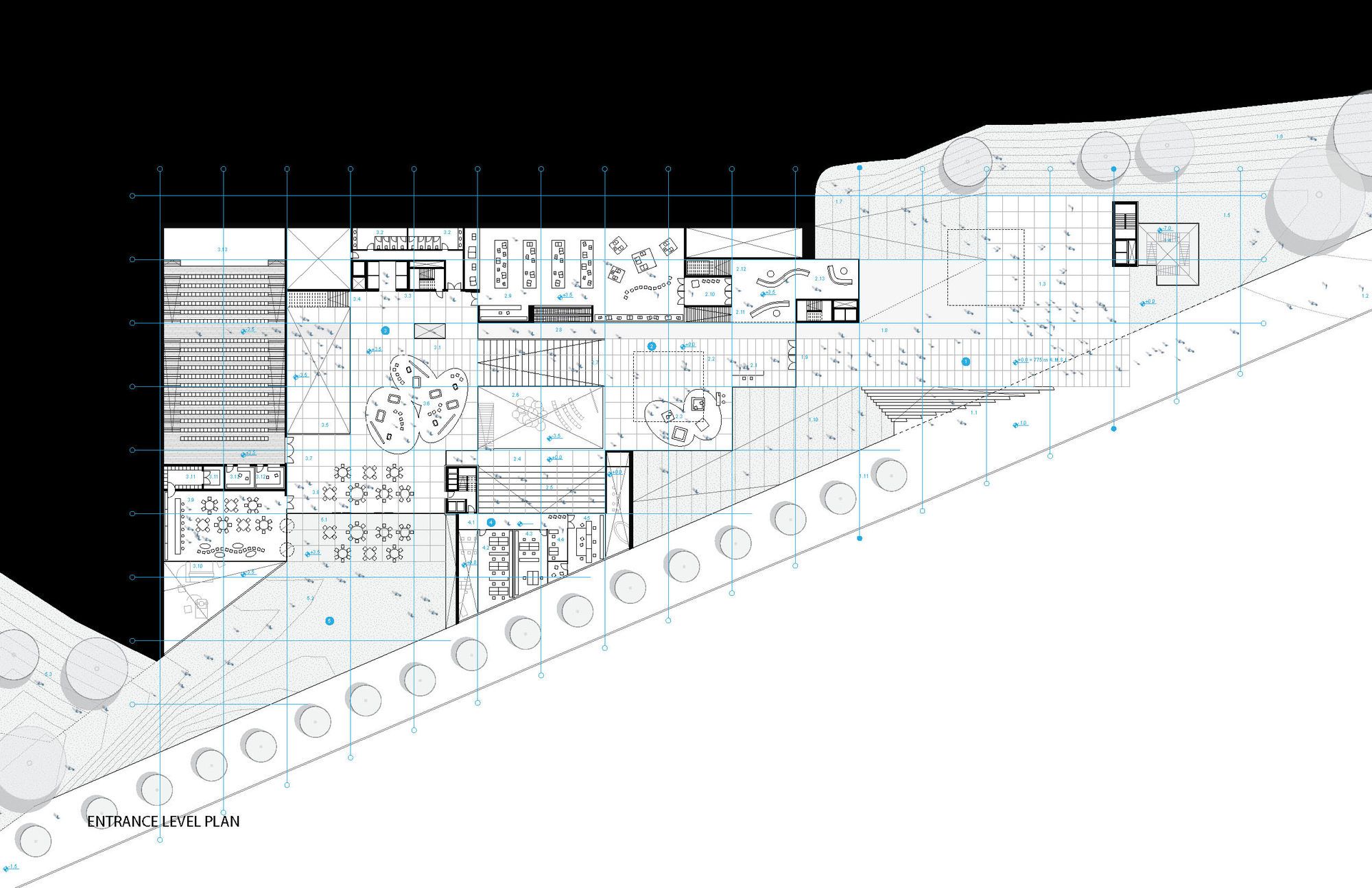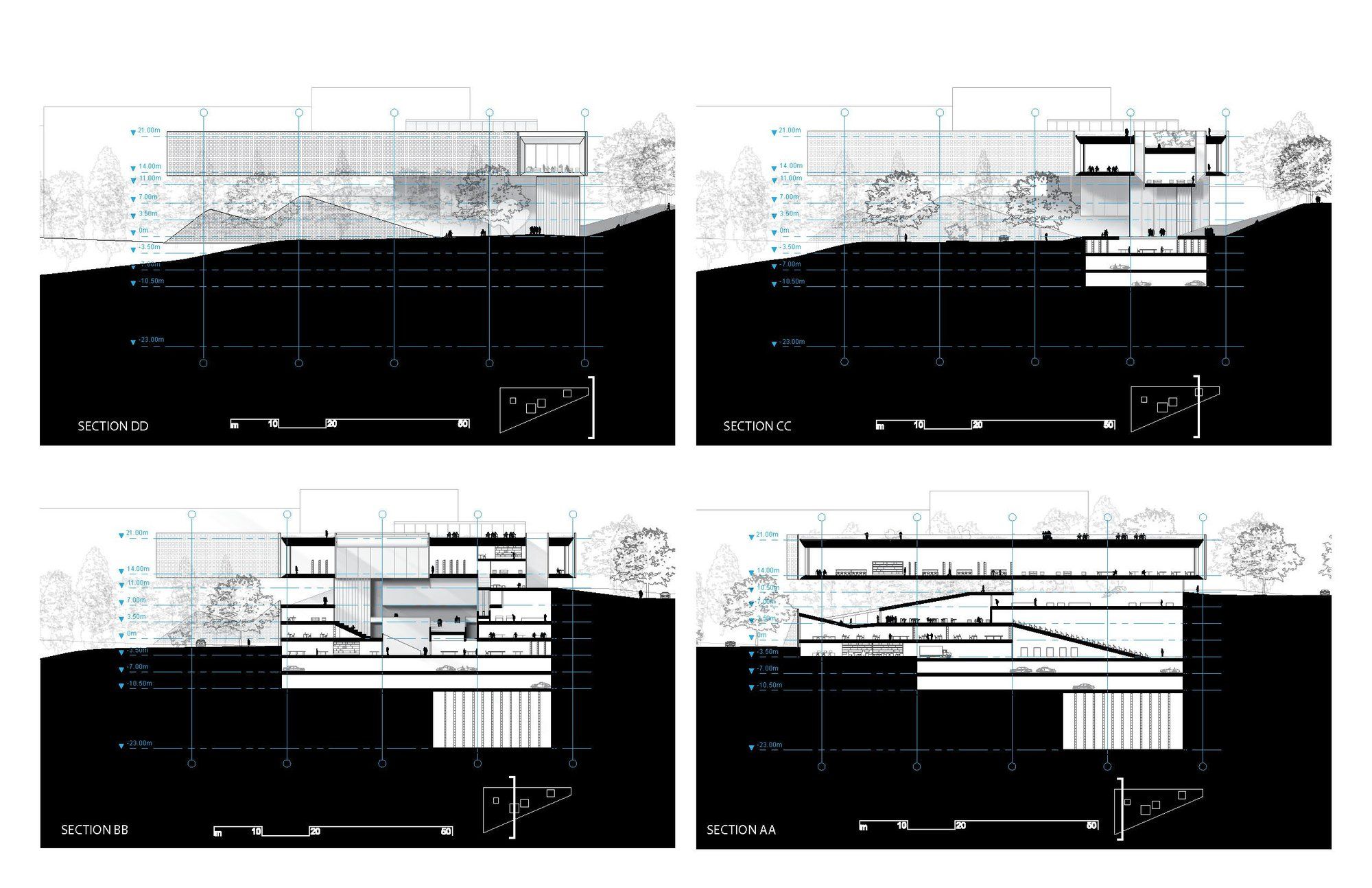A huge monolith of a building, the competition proposal by ODA for the National Library of Israel is a new venture in the typology, aiming towards openness and accessibility. Rather than a volume where knowledge and its potential are stored away and by this, kept separate from everyday life, the new scheme seeks to offer access first and foremost. Visibility is the first and most important step for a project of this sort and its success; the giant and yet refined form of the building will certainly be hard to miss. Criss-crossed screens shelter the glazed walls, offering protection from the at times harsh, Israeli sun, while still allowing visibility from both inside and out. Below is a further description by the architects.
Visibility is the first and most important step for a project of this sort and its success; the giant and yet refined form of the building will certainly be hard to miss. Criss-crossed screens shelter the glazed walls, offering protection from the at times harsh, Israeli sun, while still allowing visibility from both inside and out. Below is a further description by the architects.
 The library of the 21st century is a place animated with activity, where ideas are honored and exchanged as well as generated. The new library is a magnet for scholars and students from around the world. The pure form of the monolith contains the library’s most essential function—the reading room. This volume rests on a mountain-like base that extends the surrounding topography. Invoking the Israeli tradition of building, the mountain is excavated to reveal a dynamic hub of programming within the cavern.
The library of the 21st century is a place animated with activity, where ideas are honored and exchanged as well as generated. The new library is a magnet for scholars and students from around the world. The pure form of the monolith contains the library’s most essential function—the reading room. This volume rests on a mountain-like base that extends the surrounding topography. Invoking the Israeli tradition of building, the mountain is excavated to reveal a dynamic hub of programming within the cavern.
Thanks to its physical permeability and transparency, the inviting building embodies a sense of openness that distinguishes it from the highly protected governmental buildings in the neighborhood. The new library building creates a dialogue with the cultural buildings to the southwest, notably the National Museum of Art, the Shrine of Book, and the older library at the university, while establishing itself as part of the Parliament district grid. Protected by the monolith, a public plaza located directly opposite the Parliament building marks the beginning of a journey of learning. Stepping into the excavated space of the mountain, visitors have several choices. Climbing the mountain, visitors discover a mix of events including permanent and temporary exhibitions. Venturing below, visitors can learn about the treasure collections and have a glimpse of the building’s operating systems. Throughout the journey, light acts an attractive force, sequentially intensifying and ebbing to orient and guide visitors.
Protected by the monolith, a public plaza located directly opposite the Parliament building marks the beginning of a journey of learning. Stepping into the excavated space of the mountain, visitors have several choices. Climbing the mountain, visitors discover a mix of events including permanent and temporary exhibitions. Venturing below, visitors can learn about the treasure collections and have a glimpse of the building’s operating systems. Throughout the journey, light acts an attractive force, sequentially intensifying and ebbing to orient and guide visitors.
The journey ends at the reading room, which unfolds over 7000 square meters of open space. This vast volume is broken into smaller areas that create a sense of micro-urbanity, encouraging interaction between users and researchers from different fields. Organized across multiple gradients of light, sound, and security, the reading areas accommodate a range of study typologies, from most quiet to most social. The perforated nature of the monolith performs as a viewing device for the surrounding landscape, the city and the public space below. Outside, the existing field is preserved and extended onto the library’s rooftop. From the roof, a continuous landscape wraps around the building, enhancing its sense of openness. The sloped landscape acts as a natural amphitheater, allowing for public gatherings and events, while a rooftop bar and restaurant ensure that the building is active from day into evening.
The perforated nature of the monolith performs as a viewing device for the surrounding landscape, the city and the public space below. Outside, the existing field is preserved and extended onto the library’s rooftop. From the roof, a continuous landscape wraps around the building, enhancing its sense of openness. The sloped landscape acts as a natural amphitheater, allowing for public gatherings and events, while a rooftop bar and restaurant ensure that the building is active from day into evening.
The library is an extension of both the natural and cultural landscape, physically and conceptually tying together the most powerful components of the surrounding district. The building draws on history as it looks the future, celebrating the quest for knowledge in its expansive reading room. The new National library of Israel is a living place—a destination, site of learning, and catalyst for engagement.
Courtesy of ODA
Courtesy of ODA
Courtesy of ODA
Courtesy of ODA
Courtesy of ODA
model
diagram 01
diagram 02
public plazas diagram
conference loop diagram
exhibition platforms diagram
underworld experience diagram
site plan
reading plan
entry plan
elevations
sections 01
sections 02
Courtesy of ODA


